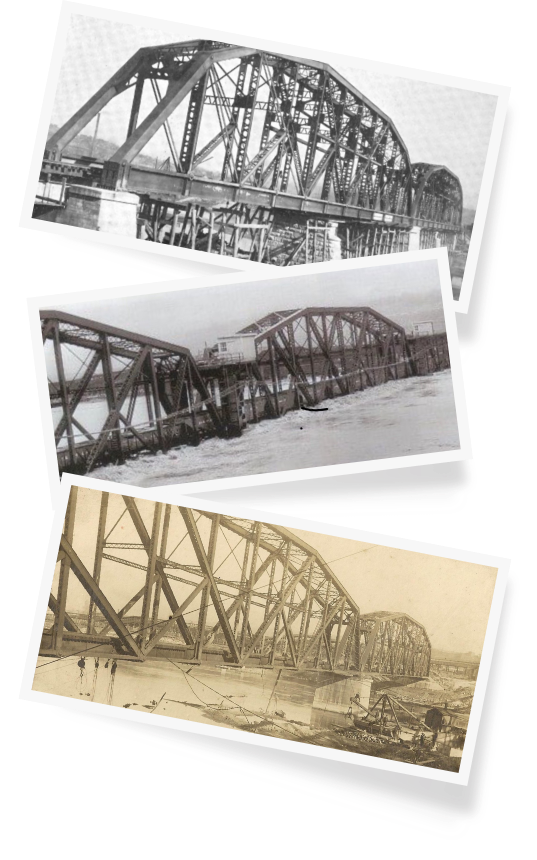A WORLD'S FIRST FOR KANSAS CITY
It’s a public crossing, a trailhead, and a full-on entertainment district — 40 feet over the water. Two, independent feasibility studies concluded its viable, it's the first of its kind in the world, and it's going to be sensational!
CHANGING THE NARRATIVE
People have been building bridges to get to the other side since the beginning of time. We write songs about them. We paint them. We use them as a metaphor. We love bridges. Yet until now, they've always been a means to an end, a way to get from one location to another.
The Rock Island Bridge can take you to the other side... but this bridge can also be your destination.
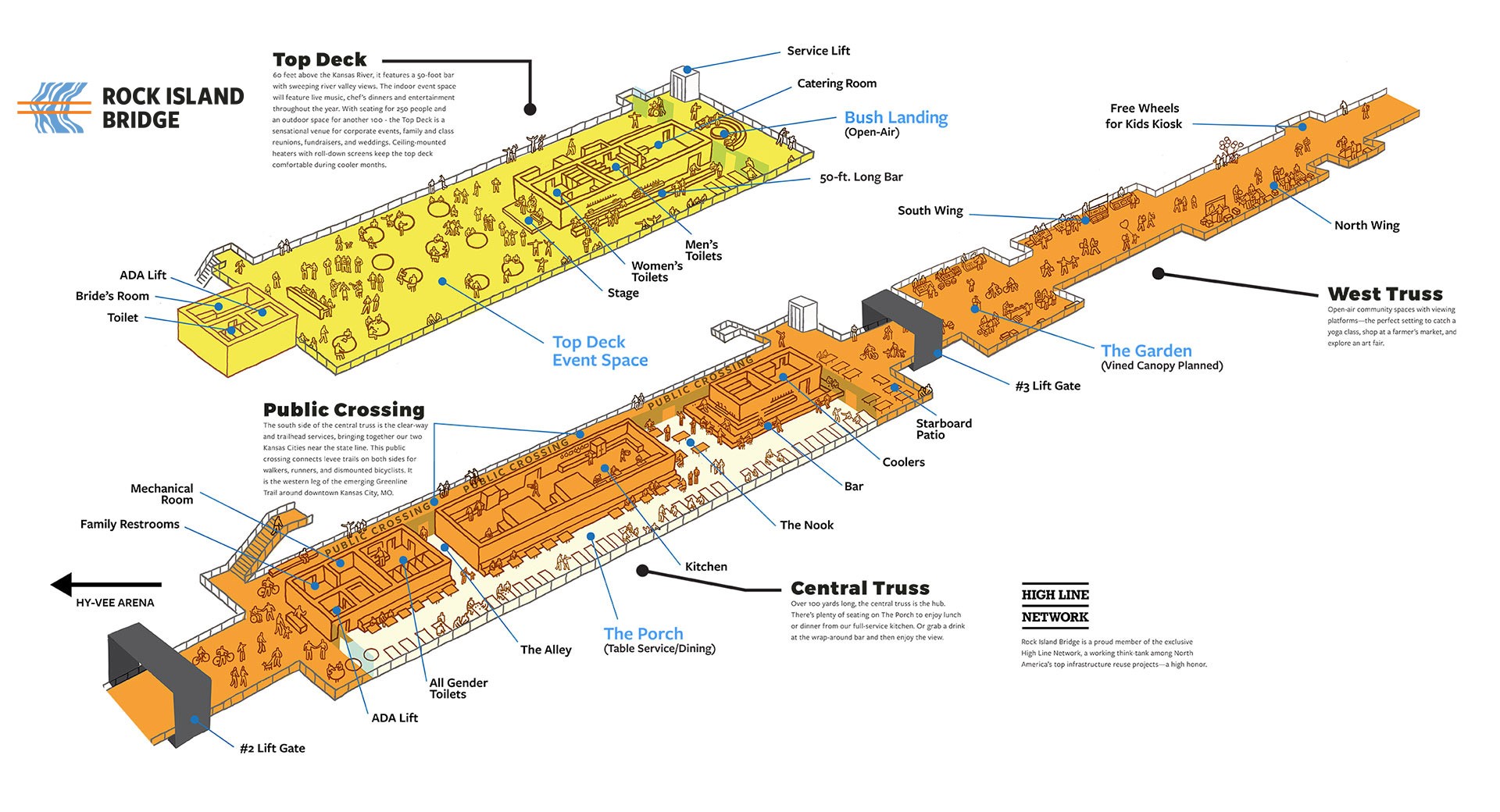
A LOOK INTO THE FUTURE
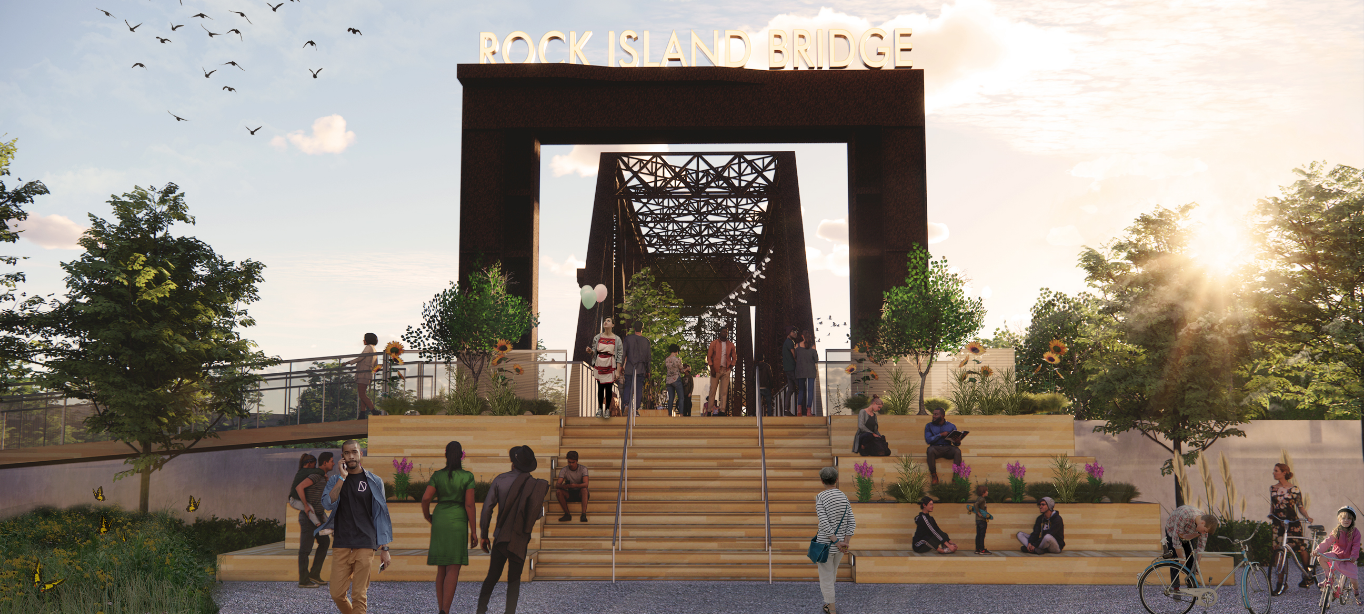
Looking west at the new “front door” for Kansas
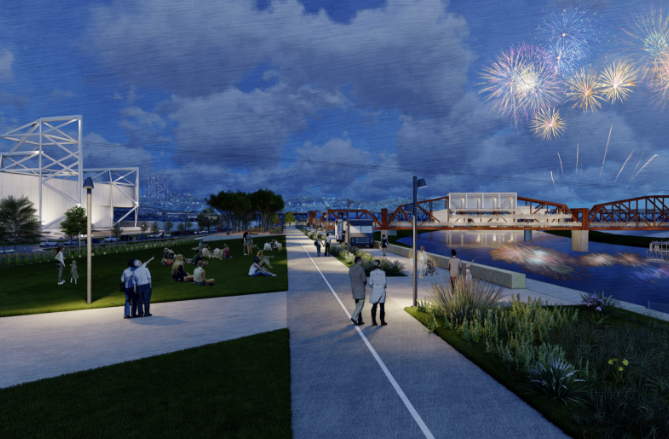
The new Kansas Waterfront is a confluence of trails, land/water, and our two Kansas City's
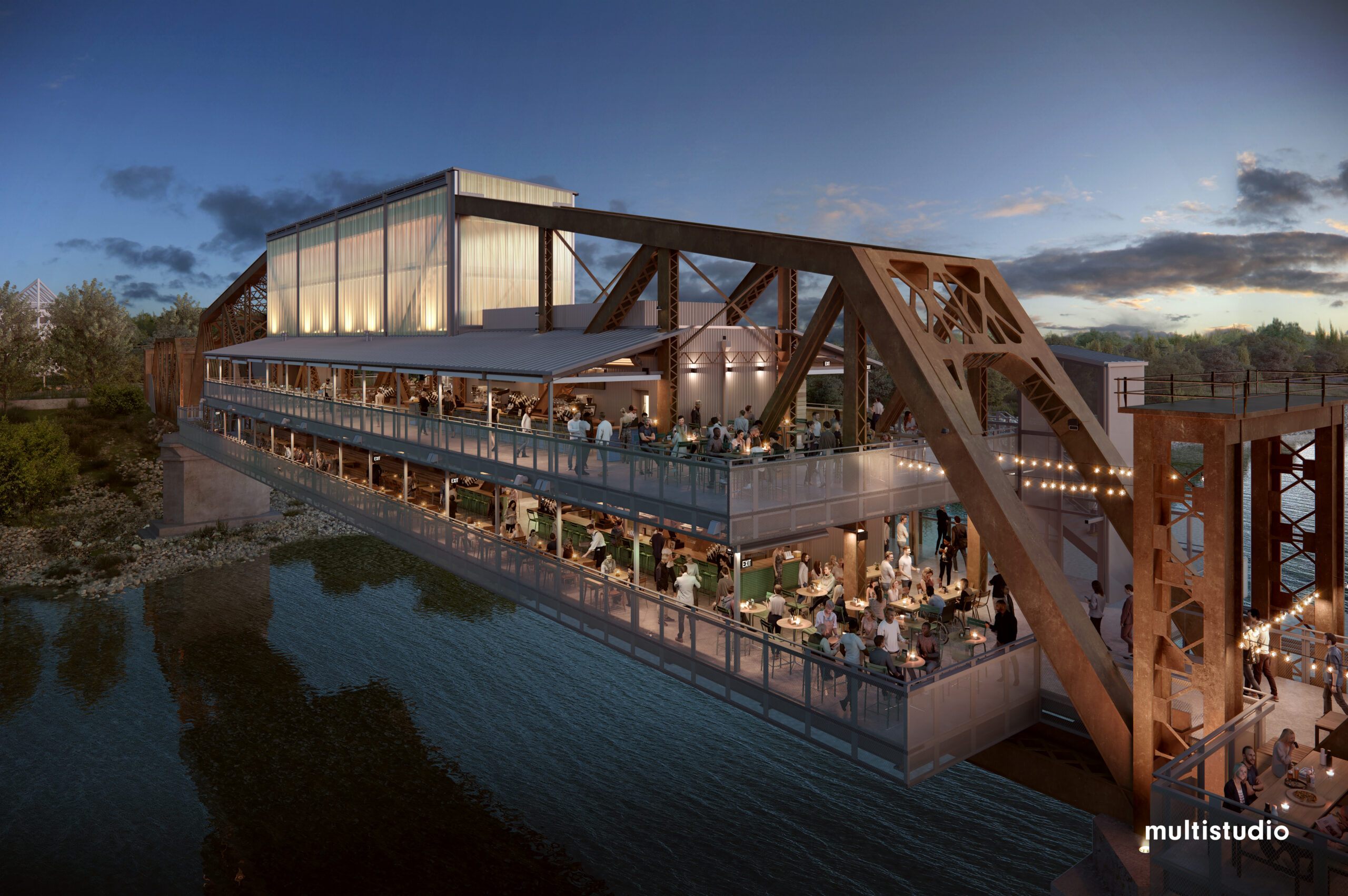
The top deck’s 300-person event space has ceiling mounted heaters and drop-down curtains for cool weather
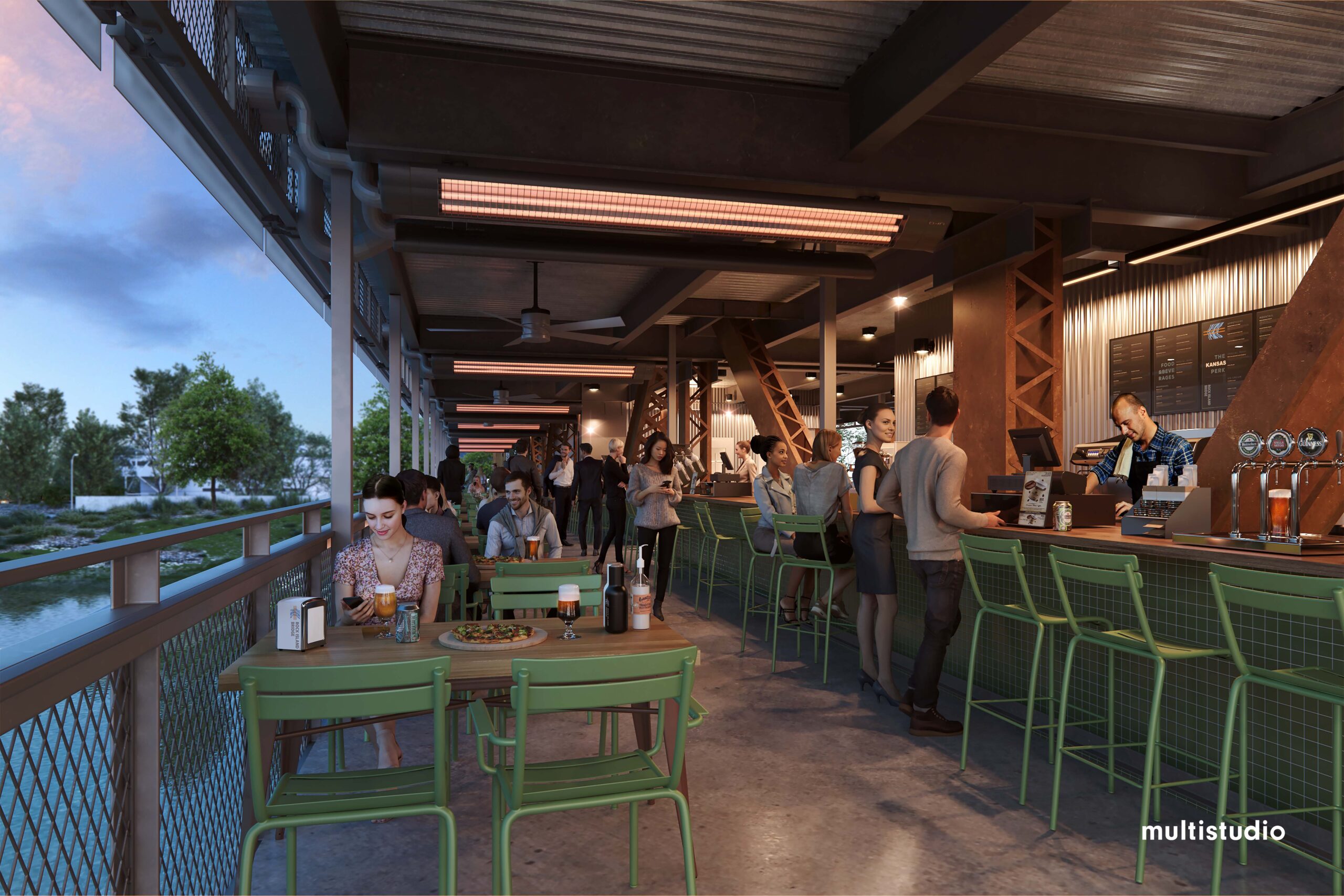
The North Deck of the Central Truss seats 300
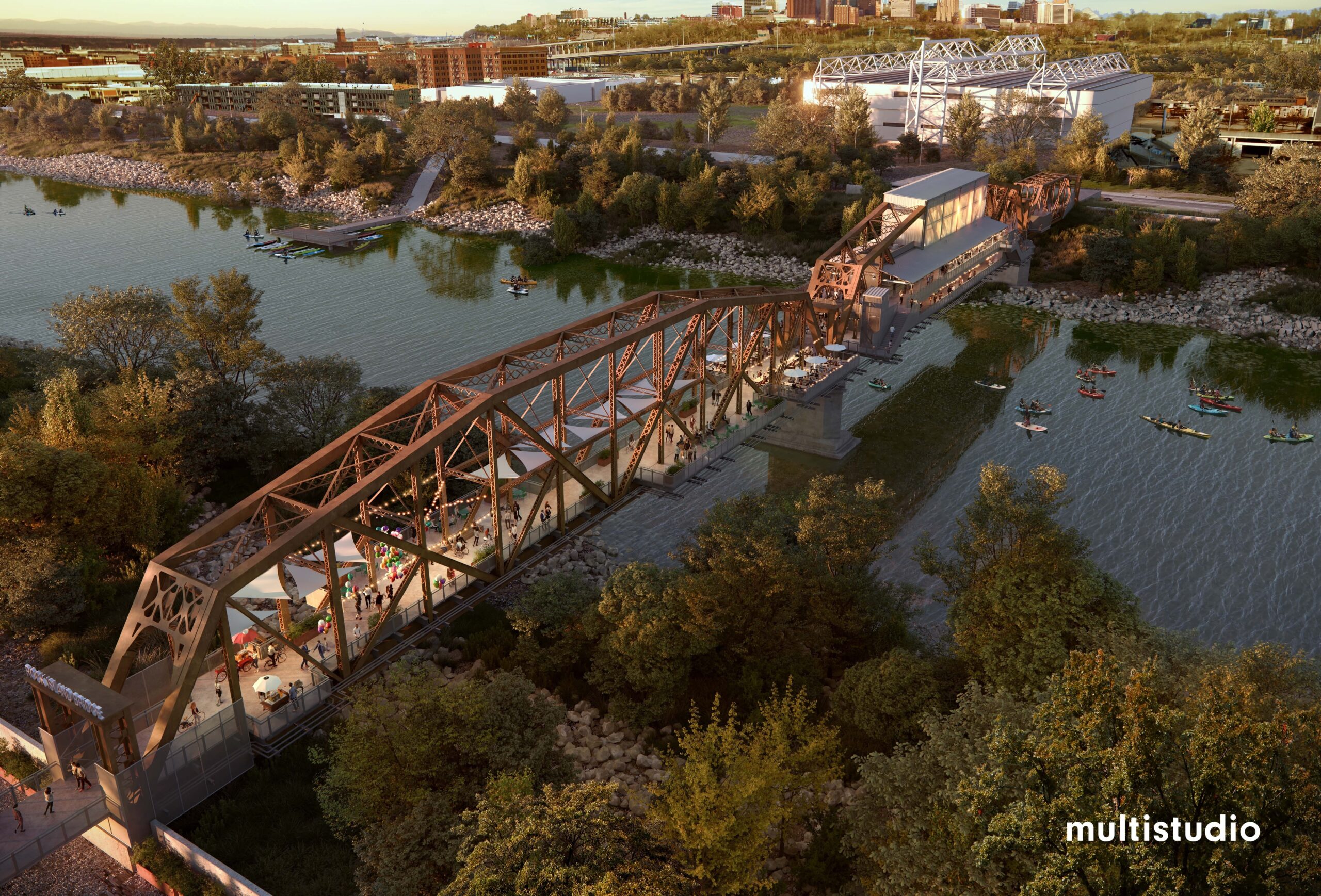
The Western Truss is perfect for public uses like farmer's markets, festivals, and just relaxing while the river roll by
INFRASTRUCTURE REUSE IS SUSTAINABILITY
The Rock Island Bridge is an infrastructure re-use project itself that reinvents 1,200 tons of blighted steel into a public crossing, trailhead and an entertainment district. It's also the catalyst in a broader movement to:
- Activate the Kansas Waterfront for recreation up to the Missouri River
- And to reconnect Kansas City to our history, nature, and to each other
The steel rails are being repurposed as foot rests along the bar and viewing platforms. And we are minimizing waste in our food service strategy, and exploring the viability of solar energy.
THE HIGH LINE NETWORK
Rock Island Bridge has been invited to join the prestigious High Line Network, a working think-tank for America's top infrastructure reuse projects. A high honor.
Members of the Network commit to creating vibrant, public spaces that anchor local communities, build civic connections, support environmental resilience and foster equitable community development.
THE ROCK ISLAND BRIDGE: FOR KANSAS CITY, BY KANSAS CITY
COMMUNITY PARTNERS
- Friends of the Kaw
- Historic West Bottoms Association
- Armourdale Renewal
- Lathrop GPM LLP
- Central Avenue Betterment
- Free Wheels for Kids
- All American Catfish
- PortKC
- ZipKC
- EAG Advertising & Marketing
- Healthy Wyandotte
- KC Boat Club
- Foutch Brothers Development (Hy-Vee Arena)
- Prime Investments
- American Crane
- Dickinson Family Foundation
- Helzberg Foundation
- Sunderland Foundation
- BlueScope Foundation
ADVISORS
- Dennis Strait | Multistudio (formerly Gould Evans)
- Crissy Dastrup | Dastrup Creative Group
- Scott Brown | Bon Ami Faultless Starch
- Bruce Holloway | Historic West Bottoms Association
- Dana Knapp | ArtsKC
- Julián Zugazagoitia | Nelson Atkins Museum of Art
- Monica Mendez | Armourdale Renewal
- Brett Posten | Highline Partners
- Rick Behrens
- David Disney | JE Dunn (retired)
GOVERNMENT PARTNERS
- Laura Kelly | Governor, KS
- David Toland | Lieutenant Governor, KS
- Tyrone Garner | Mayor of Kansas City, KS
- David Johnston | Unified Government County Administrator
- Jeff Fisher | Unified Government Public Works
- Sarah White I Unified Government Engineer
- Bridgette Jobe | Director of Tourism, KS
CIVIC INVESTORS
- Cathi and David Brain
- Robert Regnier
- Andrea Wardell
- David Lockton
- Tom and Jean McDonnell
- David Larrabee
- Dan Musser
- Neal Sharma
- Tucker Trotter
- Richard Wetzel
- Jeanette Prenger
- Ann and Frank Uryasz
- And many others


